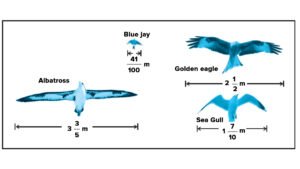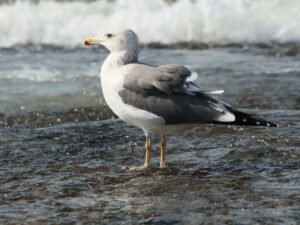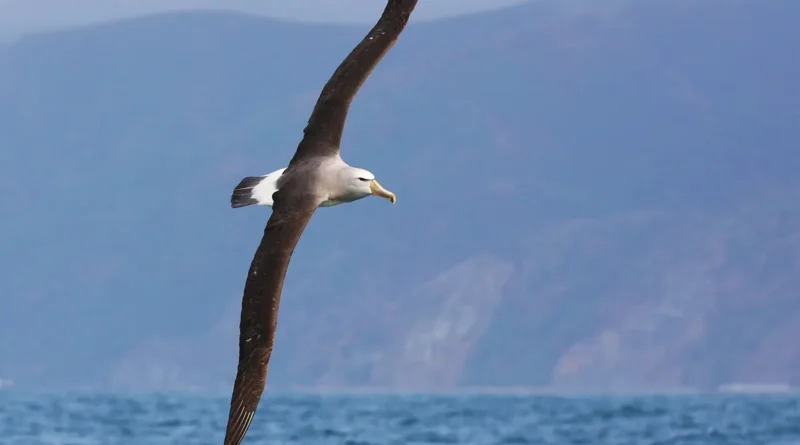Comparing the Sizes of Different Albatross Species
I. Introduction
A. Overview of Albatross Species
Albatrosses are iconic seabirds known for their impressive wingspans and graceful gliding abilities. They belong to the family Diomedeidae and are primarily found in the Southern Ocean, although some species inhabit other regions as well. Albatrosses play a significant role in marine ecosystems, serving as indicators of ocean health and contributing to nutrient cycling.
B. Importance of Understanding Size Disparities
Understanding the size disparities among albatross species is crucial for various reasons. Size differences can influence behavior, ecology, and conservation strategies. By studying these variations, researchers can gain insights into the evolutionary history of these birds and develop targeted conservation efforts to protect different populations effectively.
II. Albatross Size Variability

A. Factors Influencing Size Differences
Several factors contribute to the variability in albatross sizes, including genetic diversity, environmental conditions, and evolutionary pressures. Different species may have evolved distinct sizes to adapt to their specific habitats and ecological niches.
B. Range of Wingspan and Body Length
Albatrosses exhibit a wide range of wingspan and body length measurements across different species. While some species have relatively smaller wingspans and bodies, others are characterized by larger dimensions, reflecting the diversity within the family Diomedeidae.
III. Large Albatross Species
A. Description of Largest Species
The Wandering Albatross (Diomedea exulans) is renowned as the largest albatross species, with wingspans reaching up to 11 feet. These magnificent birds are predominantly white with dark markings on their wings and are known for their majestic appearance and impressive aerial prowess.
B. Physical Characteristics
In addition to their enormous wingspans, large albatross species typically have robust bodies and strong, hooked bills adapted for catching prey at the ocean’s surface. Their large size allows them to cover vast distances during foraging flights and withstand the rigors of long-distance travel.
IV. Small Albatross Species

A. Description of Smallest Species
The Light-mantled Albatross (Phoebetria palpebrata) is among the smallest albatross species, with wingspans averaging around 6 feet. Despite their smaller size compared to their larger counterparts, these birds are agile flyers and adept hunters, capable of capturing prey with precision.
B. Physical Characteristics
Small albatross species often have more slender bodies and narrower wings relative to their larger counterparts. These physical attributes are well-suited for maneuvering in dynamic ocean environments and capturing elusive prey species such as fish and squid.
V. Comparative Analysis
A. Wingspan Comparison
The wingspan is a critical parameter for albatross flight performance and foraging efficiency. Large albatross species typically have longer wingspans, allowing them to glide effortlessly over vast stretches of open ocean. In contrast, smaller species may have shorter wingspans, which offer advantages in maneuverability and agility.
B. Body Length Comparison
Body length also varies significantly among albatross species, with larger species generally exhibiting greater body mass and bulk. This size disparity may influence feeding strategies, territorial behaviors, and interactions with other seabirds within their ecosystems.
VI. Ecological Implications
A. Impact of Size on Behavior
Size differences can influence various aspects of albatross behavior, including feeding ecology, mating rituals, and territorial defense. Larger species may have access to different prey resources and breeding sites compared to smaller species, leading to niche differentiation and ecological segregation.
B. Adaptations to Environment
Albatrosses have evolved specialized adaptations to thrive in their respective marine environments. Size-related traits such as wing morphology, body size, and metabolic rates play key roles in determining their ecological niches and survival strategies in dynamic ocean ecosystems.
VII. Conservation Considerations
A. Size-related Threats
Albatross populations face numerous threats, including habitat loss, climate change, pollution, and fisheries bycatch. Size-related factors may exacerbate these threats, as larger species may be more susceptible to certain anthropogenic impacts such as marine debris ingestion and accidental entanglement in fishing gear.
B. Conservation Strategies
Conservation efforts aimed at protecting albatross populations must consider size-related factors and ecological dynamics. Strategies such as establishing marine protected areas, implementing sustainable fisheries practices, and mitigating plastic pollution can help safeguard albatross habitats and reduce human-induced threats to these iconic seabirds.
VIII. Future Research Directions
A. Areas for Further Study
Future research should focus on elucidating the mechanisms driving size variation among albatross species and its ecological consequences. Comparative studies examining the ecological roles, physiological adaptations, and evolutionary trajectories of different-sized albatross populations can provide valuable insights into their conservation needs and management priorities.
B. Importance of Size in Conservation Efforts
Understanding the significance of size in albatross ecology and conservation is essential for developing effective management strategies and conservation initiatives. By incorporating size-related considerations into conservation planning, policymakers, researchers, and conservation practitioners can enhance the resilience of albatross populations and safeguard their long-term viability.
IX. Conclusion
A. Summary of Size Disparities
The diversity of albatross sizes reflects the complex interplay of evolutionary, ecological, and environmental factors shaping these iconic seabirds. From the majestic Wandering Albatross to the agile Light-mantled Albatross, each species contributes uniquely to marine ecosystems and faces distinct conservation challenges.
B. Importance of Size Understanding in Albatross Conservation
As we strive to protect albatross populations for future generations, acknowledging and addressing size-related disparities is paramount. By embracing the diversity of albatross sizes and the ecological roles they fulfill, we can foster effective conservation strategies that ensure the continued survival of these magnificent seabirds.
FAQs:
Q: Are there any albatross species that fall between the sizes of the largest and smallest species mentioned in the article? A: Yes, there are intermediate-sized albatross species such as the Black-browed Albatross (Thalassarche melanophris) and the Grey-headed Albatross (Thalassarche chrysostoma), which exhibit intermediate wingspan and body length measurements.
Q: Do larger albatross species have different ecological roles compared to smaller species? A: Yes, larger albatross species may occupy different ecological niches and have distinct feeding behaviors and prey preferences compared to smaller species. These differences contribute to niche partitioning and ecological diversity within albatross communities.
Q: How do researchers measure the wingspan and body length of albatrosses in the wild? A: Researchers typically use standardized measurement techniques, such as wing chord measurements and total body length assessments, to quantify the physical dimensions of albatross specimens captured for scientific study.
Q: Are there any size-related differences in the mating behaviors or reproductive strategies of albatross species? A: Yes, size-related differences may influence mating behaviors, mate selection, and breeding site preferences among albatross species. Larger species may engage in elaborate courtship displays and occupy larger nesting territories compared to smaller species.
Q: Can size-related factors affect the survival and reproductive success of albatross populations in the wild? A: Yes, size-related factors such as body size, wing morphology, and metabolic rates can impact the foraging efficiency, energy expenditure, and reproductive success of albatross populations. Understanding these dynamics is essential for implementing effective conservation measures to mitigate size-related threats.

